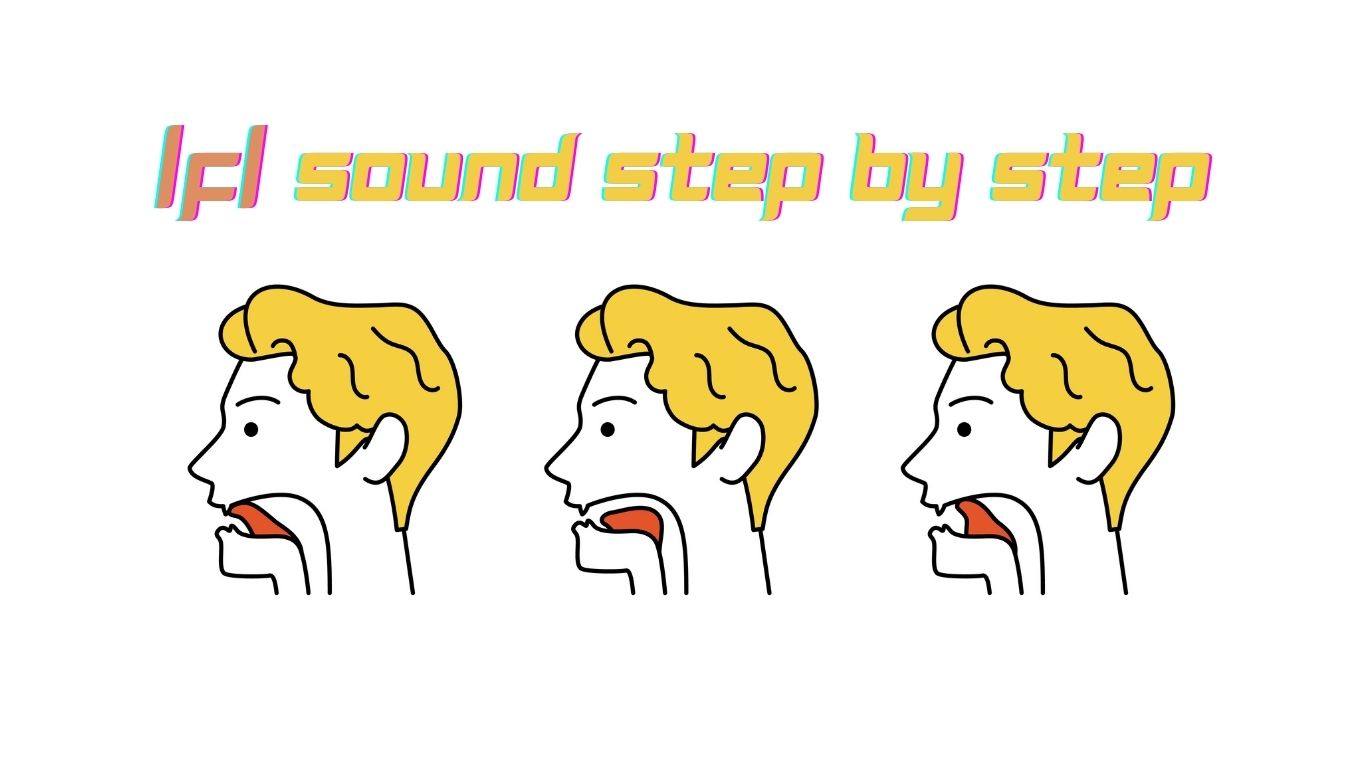
Hey there! I’m Emma, your American Accent Coach—and today, we’re focusing on a sound that’s small, airy, and deceptively tricky: the American f sound.
Think about it: you’ll find /f/ in everyday words like fun, coffee, phone, and enough. It shows up in casual chats (“for sure”), professional meetings (“final file”), and even in those tongue-twisting brand names you hear in ads. It might look simple—just a quick puff of air between your teeth and lip—but for many English learners, /f/ can be a source of constant mix-ups.
Why is that?
Here’s the good news: once you learn how /f/ is made, how it behaves in real words, and how to spot the common traps, you can train your mouth and ears to get it right every time.
In this guide, we’ll:
So, grab a mirror, get ready to “bite and blow,” and let’s make your /f/ sound clear, confident, and completely natural.

In the International Phonetic Alphabet (IPA), the American /f/ is written as /f/—and it’s known as a voiceless labiodental fricative. That’s a mouthful (pun intended), so let’s break it down in plain English.
When you make /f/ sound, your vocal cords stay still. It’s just air. Put your fingers on your throat and say “ffff.” Feel that? Actually, you don’t feel buzzing—that’s the point. Compare it to “vvvv” and you’ll feel the difference.
This sound is made by touching your top teeth lightly to your bottom lip. Not biting—just a gentle contact. Your lower lip does the moving (active articulator), and your upper teeth just stay there (passive articulator).
Coach’s Tip: If your lower lip curls too far under your teeth, it can mess up your transitions to other sounds. Keep it relaxed and natural.
A fricative is a sound made by forcing air through a narrow gap so it makes a soft hiss or buzz. For /f/, that narrow space is between your teeth and lip. Unlike /p/ (where air is completely stopped and then released), /f/ is continuous—you can hold it: ffffff.
The /f/ sound is what linguists call a fortis consonant—made with stronger muscle tension and a bigger puff of air than its “lenis” (weaker) twin, /v/.
Why does that matter? It actually changes how long the vowel before it sounds.
Pro listening exercise: Say leaf and leave slowly. Can you hear how the vowel changes? This is a big clue for native listeners—and it’s one reason mixing up /f/ and /v/ can cause misunderstandings.
If you could “see” /f/ on a spectrogram (a visual map of sound), you’d notice it’s:
This low volume is why /f/ can be harder to hear in noisy places—or why you might mix it up with /θ/ (“think”). They look and sound surprisingly similar.
Do all three, and you’ll have a solid physical feel for the /f/ sound before we even put it into words.
One of the biggest frustrations in English is spelling. Unlike some languages, English doesn’t always match sounds to letters neatly. And the /f/ sound is a great example—it can be written in four different ways.
Let’s make sense of it together.
This is the most common spelling. You’ll see it at the beginning, middle, or end of words:
If you only remember one rule—this is it.
When a short vowel comes right before /f/, English often doubles the “f.”
This is called the Floss Rule (because it often applies to f, l, s, z at the end of short words).
Examples:
Think of it like English saying: “This vowel is short—let’s double the consonant after it.”
Words with ⟨ph⟩ usually come from Greek. Once you notice this, it actually makes spelling easier! You’ll see it a lot in academic or scientific words:
Fun fact: Sometimes, ⟨ph⟩ doesn’t sound like /f/. For example, the name Stephen is often pronounced with /v/ (“Steven”). English loves exceptions!
This one’s a bit messy. The /f/ spelled with ⟨gh⟩ comes from Old English. You’ll see it mostly at the end of words, especially after ou or au:
But beware—sometimes ⟨gh⟩ is silent:
So, when you see ⟨gh⟩, don’t guess—memorize.
Here’s a little curveball. The tiny, super-common word of is spelled with ⟨f⟩ but pronounced with /v/—/əv/.
It’s the only high-frequency word that breaks the pattern, so it’s worth remembering.
Summary Table
| Spelling | Where You See It | Example |
| f | everywhere | fan, before, life |
| ff | after short vowel | off, cliff, coffee |
| ph | Greek words | phone, graph, elephant |
| gh | word endings (Old English) | laugh, rough, cough |
| f → v | only in of | of (/əv/) |
The /f/ sound is super flexible—it can appear anywhere in a word:
But what makes English fun (and tricky) is when /f/ gets into consonant clusters (groups of consonants with no vowels between).
At the beginning (initial):
At the end (final):
???? Pro Tip: Final clusters like fifth and twelfth are famously difficult—even native speakers sometimes stumble. Don’t panic if they feel awkward; with practice, they get smoother.
Mini Drill:
Try these clusters out loud, slowly first:
Say them three times faster each round—like speed training for your mouth muscles!
The /f/ sound doesn’t live in isolation—it works in a system alongside similar sounds. And here’s the thing: mixing it up with the wrong neighbor can completely change the meaning of a word. Let’s break down the two biggest contrasts and then explore an exciting sound change happening in the real world.
The most important contrast for learners is /f/ vs. /v/. These two sounds are made in the exact same way—lip against teeth, continuous air. The only difference?
This single feature changes everything.
Minimal Pairs Practice for f sound
Try these out loud while touching your throat:
Notice how the vowel before /v/ is a little longer than before /f/? That’s because voiced sounds keep the vibration going and “stretch” the vowel.
Coach’s Tip: Native speakers often rely on this vowel length difference just as much as the consonant itself to understand you. If your leaf sounds too much like leave, it might be because your vowel is too long.
Here’s where it gets even cooler. In English, some words actually switch from /f/ to /v/ depending on their grammar form:
And for plurals:
But watch out—this rule isn’t universal. Roof becomes roofs, not rooves. English loves to keep us on our toes!
Another common challenge is separating /f/ from /θ/ (the “th” in think). Both are:
The only difference is place of articulation:
Minimal Pairs Practice
Coach’s Tip: Use a mirror. For /f/, you’ll see lip-to-teeth contact. For /θ/, you’ll see your tongue poke out slightly. Visual feedback makes this distinction much easier.
Here’s a fun sociolinguistic twist. In some English dialects (especially in London, parts of the UK, AAVE, and even some U.S. regions), people replace /θ/ with /f/. So three sounds like free, and mother sounds like muvver.
This is called th-fronting. It’s not “wrong”—it’s just a natural sound change spreading in certain communities. In fact, linguists note that tricky, rare sounds like /θ/ often get replaced over time by easier, more common ones like /f/.
For you as a learner:
With just these steps, you’ll already be training your ear and mouth like a native speaker.

Now that we know what /f/ is and how it works in English, let’s get practical. How do you—as an English learner—train your mouth and ears to get it right every time?
Fun fact: Native-speaking kids usually master /f/ by around age 3 or 4. But before that, they often replace it with /p/. So “fish” might come out as “pish,” or “four” as “pour.”
Why this matters: If even native kids need time to figure out /f/, it’s totally normal for you to need practice too. You’re not behind—you’re just going through the same process consciously.
The main challenge is that /f/ doesn’t exist in all languages. When your brain doesn’t find a perfect match in your first language (L1), it substitutes something “close enough.” Common substitutions include:
The good news: once you know why your mouth is making that swap, you can retrain it.
Here’s my step-by-step system for teaching students:
For most learners, /f/ issues are normal. But for some kids (native speakers too), trouble with /f/ can be part of a bigger speech disorder. That’s where speech therapy comes in. Therapists often use:
As an L2 learner, you’re basically giving yourself mini speech therapy every time you practice /f/ carefully.
Mini Drill to Try Today:
The /f/ sound isn’t just about lips and teeth—it’s tied into how people see you, how English has changed over time, and even why some languages might not have /f/ at all. Let’s explore.
Here’s a fascinating theory: some linguists think the /f/ sound might not even have existed in ancient hunter-gatherer societies. Why? Because of teeth and food.
This doesn’t mean farming invented /f/, but it might explain why /f/ and /v/ spread so widely in the world’s languages once agriculture took hold.
Pretty wild, right? Your dinner plate could have shaped the sounds we use today.
Let’s be real: pronunciation has social weight. Mispronouncing /f/ can affect how people understand you—or even how they judge you.
Takeaway: Don’t panic about being “perfect.” Focus on being clear. Intelligibility is more important than chasing an accent that erases your identity.
The /f/ sound is punchy, airy, and memorable—so it shows up everywhere from ads to famous speeches.
Tongue Twisters (fun practice):
Advertising Slogans:
Iconic Quotes:
See how the /f/ sound gives these lines force and memorability? That’s why practicing /f/ isn’t just about clarity—it can actually make your speech sound more powerful.
So, what started as a “simple little hiss” turns out to be a sound with deep layers:
Your mission now: embrace the bite-and-blow method. Practice with mirrors, minimal pairs, and tongue twisters. Notice when /f/ shows up in songs, movies, or ads. The more you tune into it, the more natural it’ll become.
And remember—every time you say “fun,” “friend,” or “future” with a clear /f/, you’re not just making a sound. You’re unlocking a piece of American English rhythm, clarity, and confidence.
You’ve got this.
Even after lots of practice, many learners hit the same bumps with /f/. The good news? Once you know these traps, you can avoid them and fix them quickly.
❌ Saying pish instead of fish.
Why it happens: Both sounds use the lips, but /p/ is a stop (short burst of air), while /f/ is a fricative (continuous hiss).
✅ Fix: Hold the sound—fffff. Feel that steady airflow. Compare: ffff (continuous) vs. p (one puff). Use the hand test: put your palm in front of your mouth and check for continuous air.
❌ Biting down too hard with your top teeth on your bottom lip.
Why it happens: Learners sometimes think “the harder I press, the clearer the sound.” But over-biting makes your mouth tense and slows down your speech.
✅ Fix: Think “gentle touch.” Rest your teeth lightly, almost like you’re holding a piece of paper with your lip. Smooth, not tight.
❌ Saying vine instead of fine, or leave instead of leaf.
Why it happens: They’re twins—same lip + teeth placement. The only difference is voicing (silent vs. buzzing).
✅ Fix: Touch your throat. Say ffff (silent), then vvvv (buzz). Practice minimal pairs: fan–van, leaf–leave, safe–save.
❌ Saying fin when you mean thin, or free when you mean three.
Why it happens: Both are airy, weak fricatives—easy to confuse by ear. The only difference is placement: /f/ = lip + teeth, /θ/ = tongue + teeth.
✅ Fix: Use a mirror. Watch your lip for /f/, your tongue for /θ/. Practice pairs: fin–thin, free–three, deaf–death.
❌ Saying fu-en instead of fun.
Why it happens: Some learners stretch /f/ into a full vowel-like “oo” before moving on.
✅ Fix: Keep /f/ short and crisp before the vowel. Try chaining drills: f + a = fa, f + i = fi, f + u = fu. No extra syllable in between.
Quick Self-Check:
Record yourself reading this sentence:
“Four friends from France found five fresh fish.”
Play it back—does every /f/ sound clear, hissy, and light? If one sounds like /p/, /v/, or /θ/, you’ve just spotted what to work on.
The /f/ sound might look simple on paper, but now you know—it’s full of hidden details. From its spelling quirks (phone, laugh, coffee) to its contrasts with /v/ and /θ/, mastering /f/ takes more than just “bite your lip and blow.” It takes awareness, practice, and patience.
The key things to remember:
Every time you practice a word like fun, coffee, or safe, you’re training your mouth to build new habits. And just like learning piano or yoga, those small daily reps are what create lasting fluency.
So, keep your mirror handy, record yourself often, and play around with tongue twisters for fun. With time, you’ll notice your /f/ becoming natural, smooth, and automatic.
And hey—remember this: even native-speaking kids need years to master /f/. You’re not late, you’re right on track. Keep at it, and your /f/ will soon feel as easy as breathing.